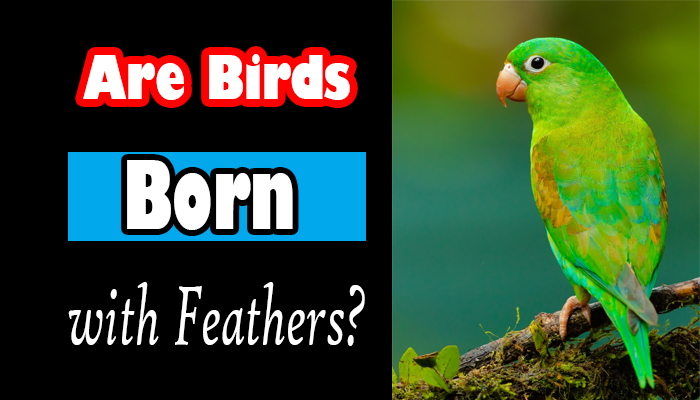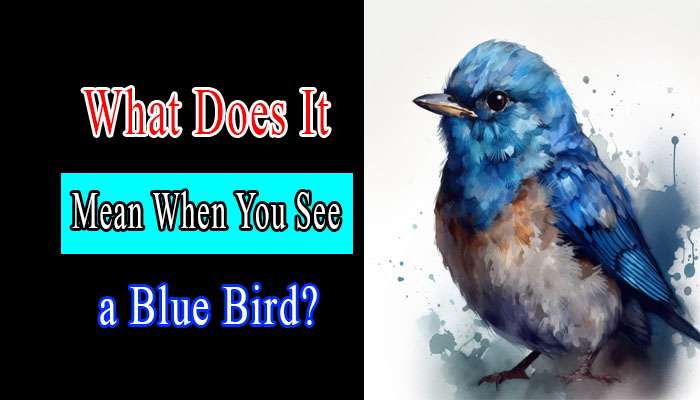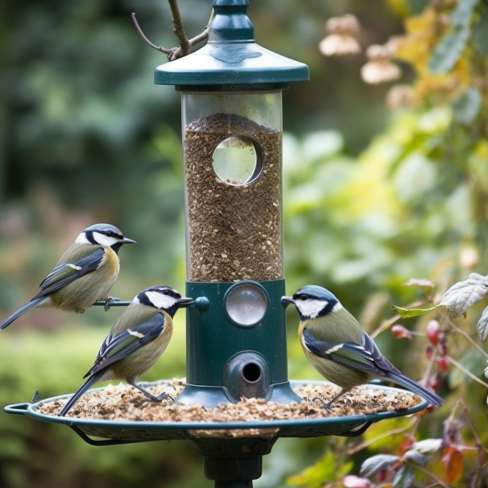Bird Songs: The Language of Feathers
Bird songs have always fascinated humans with their melodious tunes and unique patterns. These enchanting melodies, often heard in the early morning, are not just random sounds but complex communication among birds. In this article, we will delve into the world of bird songs and explore the language of feathers.
The Purpose of Bird Songs
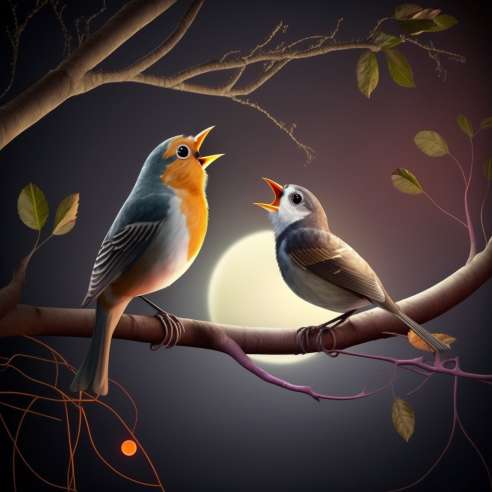
Bird songs serve various important functions in the lives of birds. Understanding their purpose provides valuable insights into the avian world.
Also Read: Bird Conservation
1. Establishing Territory
One primary function of bird songs is territorial defense. By singing from a prominent perch, male birds stake their claim on a specific area, warding off potential rivals and signaling to other birds that the territory is already occupied. The songs act as acoustic boundaries, reducing physical confrontations and ensuring efficient resource allocation.
2. Attracting Mates

Bird songs also play a crucial role in courtship rituals. Male birds showcase their vocal prowess and physical fitness through elaborate melodic songs to attract females. The music’s complexity and quality often indicate the male’s genetic fitness and ability to provide for offspring. Female birds evaluate potential mates based on their songs, leading to selecting the most desirable partners.
3. Warning signals
Birds use their songs to communicate information about potential dangers. Many species have distinct alarm calls to alert others near predators or threats. These vocal warnings help individuals within a community take appropriate evasive action, ensuring the group’s survival.
The Elements of Bird Songs

Bird songs exhibit various musical characteristics that contribute to their beauty and complexity.
1. Melody and rhythm
Their melodious tunes and rhythmic patterns characterize bird songs. Some species produce simple and repetitive songs, while others create complex melodies with intricate variations. The unique combinations of notes and pauses create a distinct musicality that varies across different bird species.
2. Repetition and variation
Repetition is a fundamental aspect of bird songs. Birds often repeat certain phrases or motifs to reinforce their message and make it more memorable. However, they also incorporate variations within the repetition, adding creative elements to their songs and demonstrating their ability to innovate.
3. Vocal range and complexity
Birds possess impressive vocal ranges, producing an array of tones, pitches, and volumes. Some birds can mimic sounds from their environment, including the calls of other species and even human-made noises. These complex vocal abilities highlight the remarkable adaptability and intelligence of avian creatures.
Bird Song Repertoires
Different bird species have distinct repertoires of songs that they employ for various purposes.
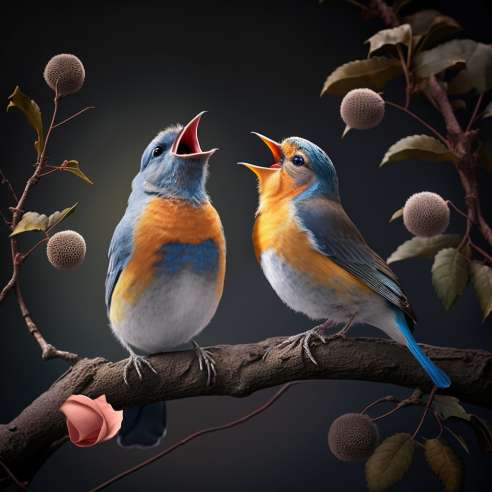
1. Species-specific songs
Each bird species has its unique vocalizations, enabling them to identify and communicate with members of their species. These species-specific songs function as a form of identity, reinforcing social bonds within bird communities and facilitating successful breeding.
2. Dialects and regional variations
Within a species, regional variations and dialects can exist in bird songs. Birds in different geographical areas may have slight song variations influenced by habitat characteristics and social interactions. These regional dialects contribute to the overall diversity and richness of avian vocalizations.
Bird Song Learning
Bird songs are not purely instinctual but often require learning and practice.
1. Innate vs. learned songs
Some bird species are born with innate songs, which are genetically predetermined and do not require learning from adult birds. However, in many cases, birds acquire their songs through learning from older individuals, often within their own family or social group. Learning songs from others allows for cultural transmission and preserving specific vocal traditions.
2. Cultural transmission
Birds learn songs through a combination of listening, imitation, and practice. Young birds listen to the songs of adult birds and gradually develop their vocal repertoire. This cultural transmission ensures that songs remain consistent within a specific community or population over generations.
3. Vocal mimicry
Certain bird species are renowned for mimicking sounds from their environment. From the famous mockingbird to the iconic lyrebird, these avian virtuosos can imitate the songs of other birds, sounds of other animals, and even human-made noises. Vocal mimicry adds an extra layer of complexity and fascination to the world of bird songs.
The Science of Bird Songs
Researchers have devoted significant effort to studying and understanding bird songs, employing various scientific techniques and technologies.
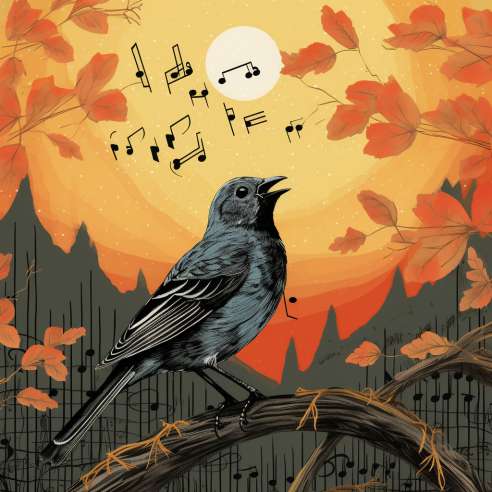
1. Studying avian vocalizations
Scientists utilize various methods to study bird songs, including field observations, audio recordings, and behavioral experiments. These investigations allow researchers to gain insights into avian species’ social dynamics, ecology, and evolution.
2. Acoustic analysis techniques
Advancements in technology have facilitated the analysis of bird songs in great detail. Acoustic analysis software helps researchers quantify and compare various aspects of bird songs, such as pitch, frequency, and temporal patterns. These analyses provide valuable information for distinguishing between species and studying song variations.
3. Bird song databases
Databases dedicated to bird songs have been created, housing vast collections of audio recordings from different species. These databases serve as valuable resources for scientists and bird enthusiasts, enabling them to access and study various avian vocalizations.
Bird Songs and Human Culture
Bird songs have long inspired human creativity and culture, leaving their mark on various artistic and musical endeavors.

1. Bird songs in literature and art
Throughout history, bird songs have been celebrated in literature, poetry, and art. They evoke a sense of beauty, freedom, and connection with nature. Writers and artists have drawn inspiration from bird songs, using them as metaphors for emotions, spiritual transcendence, and the wonders of the natural world.
2. Music inspired by bird songs
The enchanting melodies of bird songs have influenced composers and musicians across different genres. From classical compositions to contemporary pieces, the intricate rhythms and harmonies found in avian vocalizations have been incorporated into musical works, creating a harmonious fusion of human creativity and nature’s symphony.
Conservation and Preservation
Preserving bird habitats and protecting avian species is vital for maintaining the rich diversity of bird songs.
1. The impact of habitat loss
Habitat loss, primarily due to human activities such as deforestation and urbanization, poses a significant threat to birds and their songs. Destruction of nesting areas, disruption of migration routes, and the loss of food sources can lead to declining bird populations, ultimately affecting the vibrant melodies that once filled our surroundings.
2. Protecting bird habitats
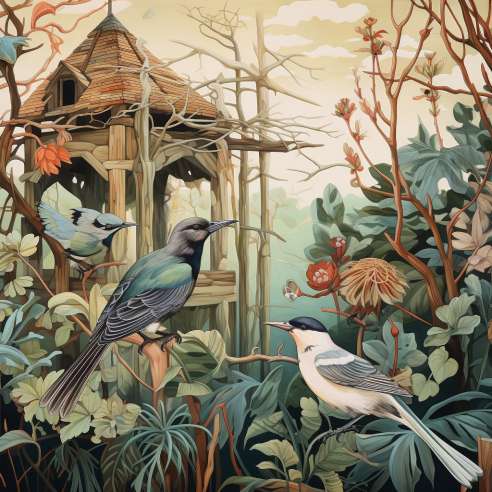
Conservation efforts focused on preserving and restoring bird habitats are crucial for ensuring the continuity of bird songs. Protecting natural areas, creating wildlife sanctuaries, and implementing sustainable land management practices can provide safe havens for birds to thrive and continue their melodic conversations.
3. Citizen science initiatives
Citizen science initiatives, where bird enthusiasts and volunteers contribute to scientific research, play an important role in understanding and protecting bird songs. These initiatives involve activities such as bird monitoring, data collection, and contributing to bird song databases.
Individuals can contribute to conserving and preserving bird songs by actively participating in these projects.
FAQs about Bird Songs
How do birds learn their songs?
Birds learn their songs through genetic predisposition and social interactions. They imitate the songs of adult birds in their environment during their early development stages.
Are bird songs different from bird calls?
Yes, bird songs and bird calls are distinct. Songs are complex vocalizations used for mating and territory purposes, while calls are shorter, simpler vocalizations used for communication within flocks.
Do all bird species sing?
No, not all bird species sing. While many songbirds are known for their melodious tunes, other birds, such as raptors, pigeons, and waterfowl, produce vocalizations that are not considered songs in the same sense.
Can birds recognize individual songs?
Yes, birds can recognize and identify individual songs. They use these songs to recognize members of their species and assess the presence of potential competitors or threats.
Can humans learn to identify bird songs?
Humans can learn to identify bird songs with practice and experience. Numerous field guides, mobile apps, and online resources are available to assist bird enthusiasts in learning and recognizing different bird songs.
Are there regional variations in bird songs?
There can be regional variations in bird songs within the same species. Environmental factors and local dialects can influence the specific melodies and variations observed in bird songs across different regions.
Conclusion
Bird songs are beautiful melodies and a language of communication among birds. These songs serve various purposes, including attracting mates, marking territories, and coordinating group activities. The complexity and diversity of bird songs showcase the remarkable abilities of avian vocalization. By understanding the language of feathers, we gain insight into the intricate world of birds and their fascinating behaviors.
